 A mural of Point Conception lighthouse painted on the exterior of a building in Lompoc, California, Santa Barbara County. An accompanying reader board describes the surrounding coastline as “the mariner’s stretch of nightmare coast known as ‘the graveyard of ships.'”
A mural of Point Conception lighthouse painted on the exterior of a building in Lompoc, California, Santa Barbara County. An accompanying reader board describes the surrounding coastline as “the mariner’s stretch of nightmare coast known as ‘the graveyard of ships.'”
“Point Conception we passed in the night, a cheery light gleaming over the waters from its tar light-house, standing on its outermost peak. Point Conception! That word was enough to recall all our experiences and dreads of gales, swept decks, topmast carried away, and the hardships of a coast service in the winter.”
-Richard Henry Dana, Jr., Two Years Before the Mast (1840)
In 1834, Richard Henry Dana, Jr. dropped out of Harvard University, boarded the brig Pilgrim in Boston harbor and set sail on a two year voyage working as a common seaman. His maritime job brought him to the Pacific coast of California, where he worked in the hide and tallow trade loading the ship with cattle skins. The voyage from Boston around Cape Horn to Santa Barbara took 150 days.
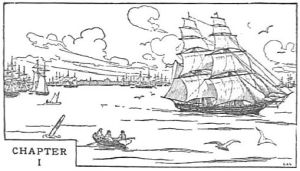 In 1840, he published a narrative of his experiences under the title, Two Years Before the Mast, and in this story he relates an early view of California including Santa Barbara, which he called at that time “the central port of the coast,” and which the Pilgrim called upon numerous times.
In 1840, he published a narrative of his experiences under the title, Two Years Before the Mast, and in this story he relates an early view of California including Santa Barbara, which he called at that time “the central port of the coast,” and which the Pilgrim called upon numerous times.
In Two Years Before the Mast, Dana describes his experience during a treacherous nighttime passing of Point Conception. In his full narrative, select excerpts of which follow below, he details the frantic work of his fellow sailors to guide their ship through the tempest in one piece, while wild swells sweep the deck, the sails and rigging are ripped to shreds and the gale force wind threatens to snap the mast in two. Dana describes working on the open deck and being “several times buried in the seas, until the mate ordered us in, from fear of our being washed off.”
“We had a fine breeze to take us through the Canal [Santa Barbara Channel], as they call this bay of forty miles long by ten wide. The breeze died away at night, and we were becalmed all day on Sunday, about half-way between Santa Barbara and Point Conception.
Sunday night we had a light, fair wind, which set us up again; and having a fine sea-breeze on the first part of Monday we had the prospect of passing, without any trouble, Point Conception, —the Cape Horn of California, where, the sailors say, it begins to blow the first of January, and blows until the last of December.
Toward the latter part of the afternoon, however, the regular northwest wind, as usual, set in, which brought in our studding-sails, and gave us the chance of beating round the Point, which we were now just abreast of, and which stretched off into the Pacific, high, rocky, and barren, forming the central point of the coast for hundreds of miles north and south. A cap-full of wind will be a bag-full here, . . .”
“We had been below but a short time, before we had the usual premonitions of a coming gale, —seas washing over the whole forward part of the vessel, and her bows beating against them with a force and sound like the driving of piles.”
“I shall never forget the fineness of the sight. It was a clear, and rather a chilly night; the stars were twinkling with an intense brightness, and as far as the eye could reach there was not a cloud to be seen. The horizon met the sea in a defined line. A painter could not have painted so clear a sky. There was not a speck upon it. Yet it was blowing great guns from the northwest.”
“It was a fine night for a gale; just cool and bracing enough for quick work, without being cold, and as bright as day. It was sport to have a gale in such weather as this. Yet it blew like a hurricane. The wind seemed to come with a spite, an edge to it, which threatened to scrape us off the yards. The force of the wind was greater than I had ever felt it before; . . .”
“The force of the wind had never been greater than at this moment. In going up the rigging, it seemed absolutely to pin us down to the shrouds; and, on the yard, there was no such thing as turning a face to windward.”
“The gale was now at its height, `blowing like scissors and thumb-screws’; the captain was on deck; the ship, which was light, rolling and pitching as though she would shake the long sticks out of her, and the sails were gaping open and splitting in every direction.”
“For three days and three nights the gale continued with unabated fury, and with singular regularity. There were no lulls, and very little variation in its fierceness. … All this time the sea was rolling in immense surges, white with foam, as far as the eye could reach, on every side, for we were now leagues and leagues from shore.”
“During these seventy-two hours we had nothing to do but to turn in and out, four hours on deck, and four below, eat, sleep, and keep watch. …and we had many days’ sailing to get back to the longitude we were in when the storm took us.”
“Day after day Captain Faucon went up to the hill [overlooking Monterey Bay] to look out for us, and at last gave us up, thinking we must have gone down in the gale which we experienced off Point Conception, . . .”
 Illustrations of Point Conception lighthouse penned in 1859 by Major Hartman Bache, inspector of the 12th Lighthouse District. (c) NOAA
Illustrations of Point Conception lighthouse penned in 1859 by Major Hartman Bache, inspector of the 12th Lighthouse District. (c) NOAA
Dana’s dramatic description of the sea and weather surrounding Point Conception is lent greater weight having come from a mariner well experienced in sailing open ocean through some of the world’s most deadly waters, including a frightful trip around Cape Horn during an Antarctic winter, and having to work the icy decks and rigging of a pitching and rolling ship under howling winds in the midst of “driving sleet, and darkness, and wet, and cold.”
Herman Melville, author of Moby Dick (1851), widely considered one of the greatest American novels of all time, advises readers in White Jacket (1850):
“But if you want the best idea of Cape Horn, get my friend Dana’s unmatchable Two Years Before the Mast. But you can read, and so you must have read it. His chapters describing Cape Horn must have been written with an icicle.”
Knowing well the nastiness of Cape Horn, Dana still saw fit to compare Point Conception to it, which surely is some proof of the Central Coast headland’s formidable nature. The treacherous seas off Point Conception result in part from the confluence of cold and warm water oceanic currents. Typically it is a region of unsettled, foggy and blustery weather and rough and turbulent chilly water that has long played havoc on passing vessels.
A short distance up the coast from Point Conception, at Honda (Pedernales) Point, one of the largest peacetime disasters in United States naval history occurred, when on September 8, 1923, a navigational error in foggy or misty weather led seven destroyers aground on the jagged seashore and 23 sailors died.
As the United States Coast Pilot publication of 2012 notes:
Point Conception has been called the Cape Horn of the Pacific because of the heavy NW gales encountered off it during the passage through Santa Barbara Channel. A marked change of climatic and meteorological conditions is experienced off the point, the transition often being remarkably sudden and well defined.
 Another view of the lighthouse from 1859 when it was located atop the crest of the headlands rather than at its base, as shown below.
Another view of the lighthouse from 1859 when it was located atop the crest of the headlands rather than at its base, as shown below.
 Point Conception lighthouse. (c) John Wiley
Point Conception lighthouse. (c) John Wiley
Related Post:







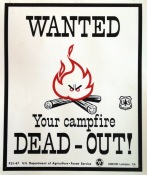

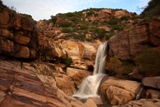
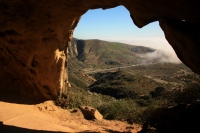

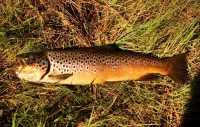
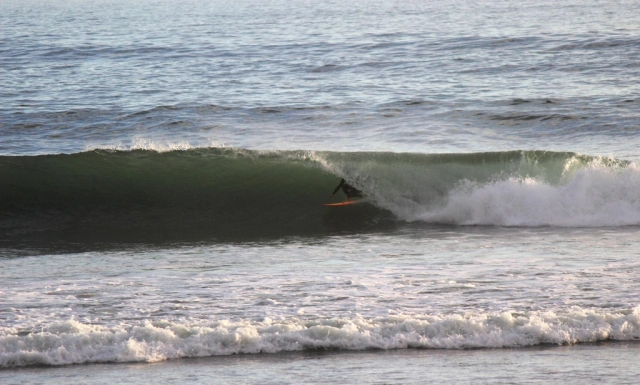
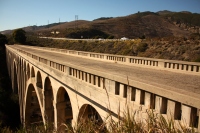
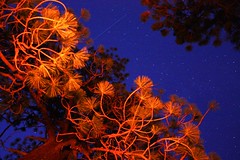

















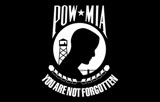
Greatly entertaining and edifying post, as usual, Jack. I may have gotten a taste of that wind camping at Jalama Beach.
Hey Lanny. Thank you. Heheh, yeah, Jalama . . .no shortage of wind up there! I was up around that vicinity this afternoon, funnily enough, and there was a cold, strong wind sweeping the land as usual. I was glad I didn’t forget my windbreaker, as I tried to put it on with sleeves flapping around.
Jack: As usual you have captivated me. It’s funny, because I just finished looking up Dana and pictures of 1840 Santa Barbara last week and I would share his portrait with you and others, but you have no mechanism for that. So, you guys look him up. Steve
P.S. Two weeks ago, 9 of us old guys went up the “33” to the Half Way Cafe and went quasi off the road to a ‘mysterious’ 80 acre “auto graveyard” of supposedly about,1000 cars. There were so many cars and trucks that I would give my ‘eye teeth’ for, but the owner will never sell any, as it is truly an “auto graveyard”, and they will never leave the property. You can see it on google maps.
I was a crew member of the coast guard ice breaker AGCR 99 West wind in 1944. We were cough in a ty phune and lost a ship mate over the side. We never found him. My father was in the navy when several destroyers ran a ground of the point and sank. The Wixs was a ship he had been assigned to.